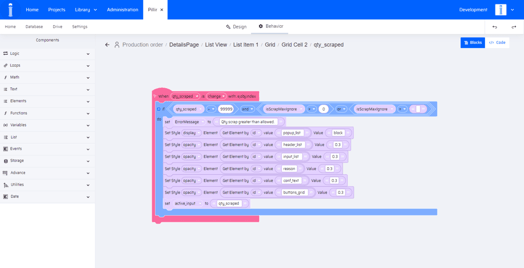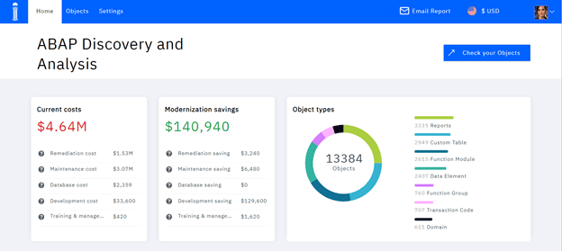ROI from SAP app development is enhanced when stakeholders are involved in each phase of the process and developers have visibility into legacy custom code and technical debt.
It’s an age-old problem: Users ask for one thing, but software developers deliver something completely different. You can often trace the disconnect back to the fact that SAP app development processes are shrouded by most stakeholders throughout an organization. Moreover, people who need new apps and features don’t necessarily have development or tech expertise – and they don’t speak developers’ language. The communication gap that may exist can prevent them from clearly communicating what they need and want from an app. So all too often, a line of business (LOB) manager requests SAP custom app development, developers take the idea and run with it, but the resulting app falls flat.
Unfortunately, a development team receiving negative feedback from users testing a new app is all too common. In addition, the negative impact of an unsuccessful app development project on your entire organization is also a familiar story. Your development team faces rework—sometimes literally back to the drawing board. Costs are significantly more than you’ve budgeted for, and other development projects may be delayed. Worst of all, users who requested the app still don’t have the solution they were looking for, and they aren’t making the progress they intended toward greater productivity, profitability, or enhanced customer experiences.
How to Create SAP App Development Visibility
Fortunately, developers can prevent projects that result in apps that don’t meet expectations. The key is closely working with stakeholders throughout the development process. They’ll have a clearer picture of what users need if they ask questions, and understand the pain points driving their requests rather than just working from an idea passed on from a manager. Also, get input during modeling and design, taking the opportunity to show users (rather than merely telling them) how the app will work, look, and feel.
At each phase, be flexible and open to changes users suggest – and remember adjustments and adaptations now are much easier than making them after you deliver an app for testing. Also, it’s imperative to get sign-off before moving from discovery and then again from modeling and design before moving to the build phase. This step ensures – and gives you the proof in writing – that everyone is on the same page.
Involving stakeholders can also foster cooperation. They’ll have a better understanding of the development process and timelines, so they’re more patient as they wait for the apps they need. Their participation can also lead to healthier adoption. When stakeholders have a sense of ownership in a project, they’ll be more motivated to try it and, when it works the way they envision, to continue to use it.
Visibility Is Also Key to Preserving Tribal Knowledge (and Reducing Technical Debt)
Visibility in the custom SAP app development process is also key to maintaining apps throughout their lifecycle. Research by the Americas’ SAP User Group (ASUG) and Pillir found that the most valuable custom SAP code that about half of businesses use is six years old – or older. Many changes can occur in six years – developers can resign or move to new roles within an organization. New developers who fill those positions often have limited visibility into custom ABAP code, and carry technical debt from update to update, whether it’s beneficial to do so or not.
Addressing custom SAP code in that manner may have worked while your business used the same SAP environment. However, when you’re planning a transition to SAP S/4HANA, cloud or a new on-premises SAP environment, that technical debt can create operational and cost barriers that stand in the way of your plans.
Visibility, again, is key. It’s vital for both your development team and stakeholders so they can make informed decisions about existing custom code and technical debt as they plan the transition to an SAP cloud platform or new on-premises SAP ERP environment.
Get the Visibility You Need
Gaining visibility into SAP app development and ABAP modernization processes is challenging with legacy software development processes. However, Pillir’s low-code/no-code platform is designed for visibility.
Pillir’s graphical interfaces enable engineers and developers to work closely with business analysts and other stakeholders to model apps – even if those stakeholders have no development experience.
Additionally, Pillir offers an ABAP diagnostics tool that allows SAP users to see clearly which ABAP customizations they need to remediate and the costs associated with moving them to SAP S/4HANA Cloud or another environment.
It’s not necessary for developers or stakeholders to think of SAP app development as taking a shot in the dark. Using the right tools that enhance visibility will improve the efficiency and cost-effectiveness of development as wells as the satisfaction of getting it right the first time.
Learn more about SAP Application Development in our e-book -
“How to Eliminate Technical Debt in SAP”








 Back
Back/Logo%20-%20black%20text%20blue%20pillar%20(large)-1.jpg)

